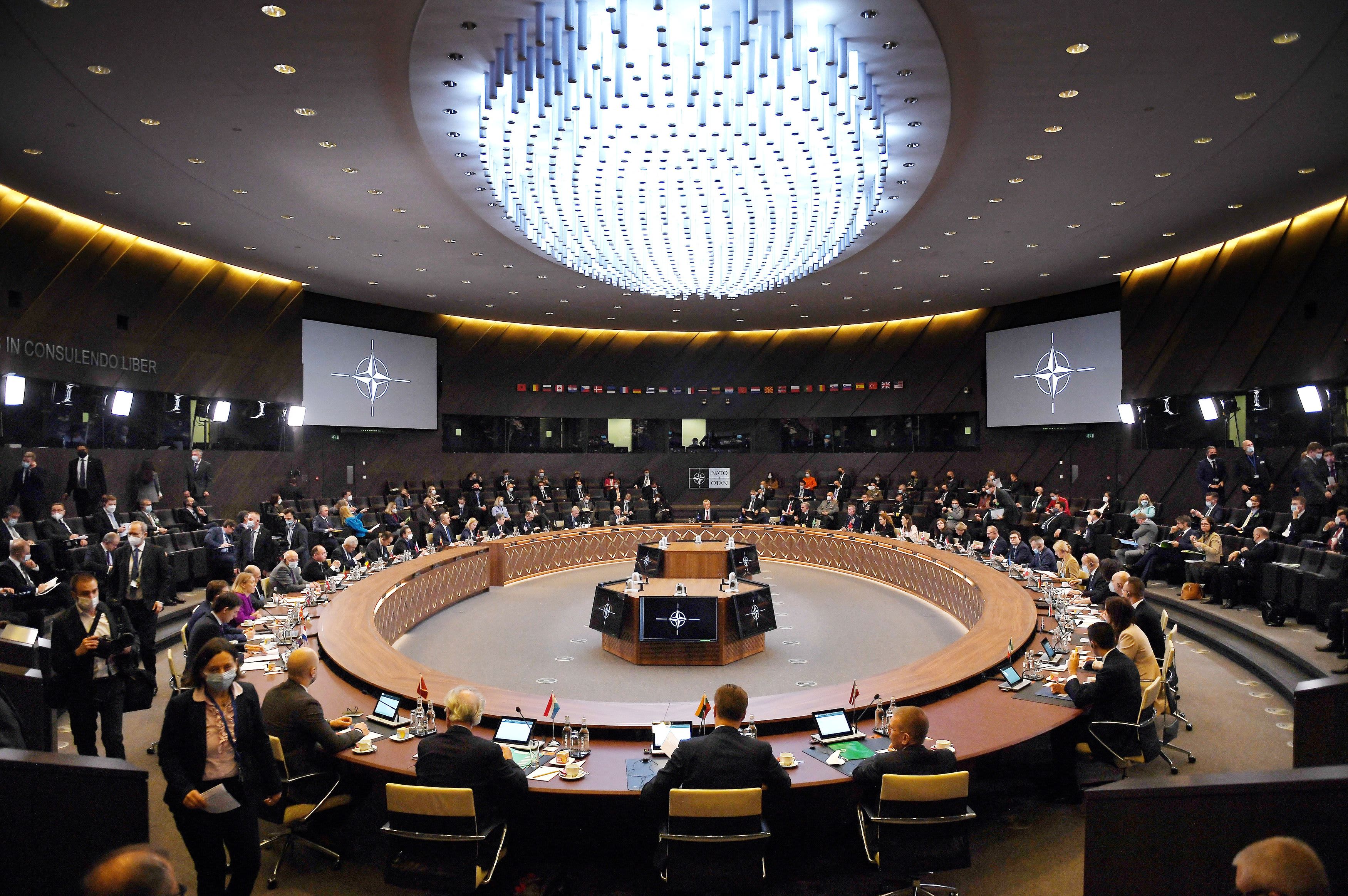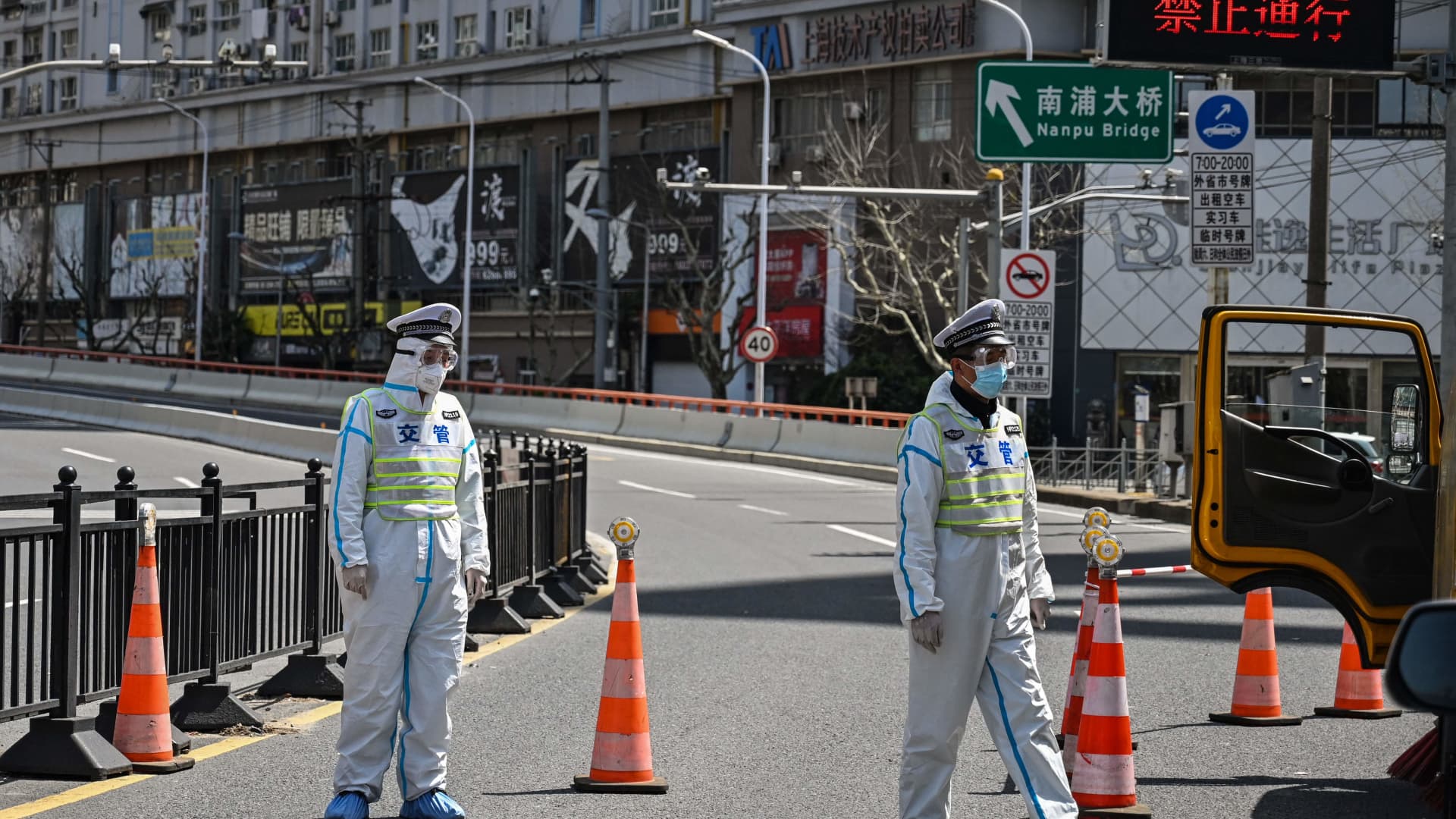Ukraine's nuclear power plants are still a source of nightmares years after the Chornobyl disaster
It's been 37 years since the deadly explosion at the Chornobyl nuclear power plant. Such facilities in Ukraine are now a source of great worry amid the war.

A Ukrainian army soldier stands guard at the Chornobyl Nuclear Power Plant on April 26, 2022, in Chornobyl, Ukraine. Staff from the International Atomic Energy Agency visited Chornobyl on the 36th anniversary of the world's worst civilian nuclear incident.
John Moore | Getty Images
It's been 37 years since the disastrous and deadly explosion at the Chornobyl nuclear power plant in Ukraine, then a part of the Soviet Union, caused widespread horror and panic as a massive plume of radioactive material was released into the atmosphere across Europe.
Ukraine's President Volodymyr Zelenskyy on Wednesday commemorated the Chornobyl nuclear power plant disaster on April 26, 1986, saying that the events on that day "left a huge scar on the whole world."
The accident at the plant occurred after the fourth reactor at the nuclear power plant "went out of control during a test at low-power, leading to an explosion and fire that demolished the reactor building and released large amounts of radiation into the atmosphere," the International Atomic Energy Agency summarized although a combination of complex factors are known to have led to the disaster.
The initial explosion killed two of the plants' personnel but several dozen firemen and emergency workers died in the subsequent three months after the explosion from acute radiation sickness.
A view of a housing project in the ghost town of Pripyat near Chornobyl's nuclear power plant in 2006. Chornobyl's number-four reactor, in what was then the Soviet Union and is now Ukraine, exploded 26 April 1986, sending a radioactive cloud across Europe, becoming the world's worst civilian nuclear disaster.
Sergei Supinsky | Afp | Getty Images
The disaster is still seen as the most serious accident in the history of nuclear power operation although Ukraine has remained heavily dependent on nuclear energy.
Today, its nuclear power plants have once again become a source of nightmares as fears abound for their safety and security amid the relentless fighting between Ukrainian and Russian forces.
Ukraine has 15 operable nuclear reactors at four plants that generate about half of its electricity, according to the World Nuclear Association, although since the war started last February, the number of units in operation has changed over time, "with reactors put online and taken offline depending on the situation around the plants and the stability of external power supplies," the association notes.
Most concerns around the safe functioning of the country's power plants amid war have centered on the the nuclear power plant located in Zaporizhzhia in southern Ukraine, which also happens to be Europe's largest nuclear power plant.
The Zaporizhzhia plant was occupied early on in the war by Russian forces (when it was attacked in the early hours of March 2 last year, it became the first operating civil nuclear power plant to come under armed attack) and it has repeatedly found itself at the epicenter of fighting since then, with both sides accusing each other of shelling near the facility and risking another potentially catastrophic nuclear accident.
A Russian serviceman guards an area of the Zaporizhzhia Nuclear Power Station in territory under Russian military control, in southeastern Ukraine, on May 1, 2022.
AP
There have been a number of occasions now when shelling near the plant has damaged external power lines to the facility, meaning that Ukrainian workers still running the plant have had to rely on emergency generators for the power needed for reactor cooling and other essential nuclear safety and security functions.
The IAEA's Director-General Rafael Grossi described the unstable conditions that the plant is forced to operate in as "extremely concerning," noting that "this is clearly not a sustainable way to operate a major nuclear facility."
He has often repeated calls for the establishment of a demilitarized zone around the plant but, for now, that remains a distant prospect, although the IAEA was able to convince Russia to allow its inspectors to remain permanently on site to monitor safety at the plant. The IAEA has also sent inspectors to other nuclear facilities in Ukraine.
'Nuclear terrorism'
Ukraine has accused Russia of using the plant as a storage site for weapons knowing full well of the threat that creates to nuclear safety at the plant while Russia accuses Ukraine of "nuclear terrorism," accusing Ukraine of shelling the plant and deliberately creating the threat of a possible nuclear catastrophe.
Both sides deny each other's accusations while the IAEA's chief has said both sides have built up their military presence around the plant but that his job is "not to point fingers," but to keep the plant safe.
Russian servicemen keep watch from the hatches of a military vehicle as the delegation of the International Atomic Energy Agency (IAEA), including its head Rafael Grossi, visits the Russian-controlled Zaporizhzhia nuclear power plant in southern Ukraine on March 29, 2023.
Andrey Borodulin | Afp | Getty Images
On the anniversary of the Chornobyl disaster, Ukraine and Russia have once again traded barbs over the Zaporizhzhia plant.
Zelenskyy said "everything must be done" to prevent Russia "from using nuclear power facilities to blackmail Ukraine and the world" while Yevgeny Balitsky, the Russian-installed governor of the Zaporizhzhia region, warned that history could repeat itself.
"Today, the collective West, flirting with the insane leadership of Kyiv, supplying Nazi Ukraine with weapons and pumping ideology, puts the world on the verge of another atomic catastrophe," he said on his Telegram channel in comments translated by Google, repeating baseless claims.
Elsewhere, the head of the EU delegation in Ukraine, Matti Maasikas, commemorated the victims of the Chornobyl disaster in a video address on Twitter. He also condemned Russia's ongoing occupation of the Zaporizhzhia facility, noting that "the unlawful occupation, the interruption of normal operations, mining and shelling, the harassment, violence, and kidnapping of Ukrainian personnel significantly raise the risk of an accident."
"The control over the occupied Zaporizhzhia nuclear power plant needs to be returned to the Ukrainian authorities," he said.
A man lays flowers in the memorial of the dead Chornobyl workers during the celebrations in Kiev of the 37th anniversary of the nuclear accident in Ukraine.
Celestino Arce | Nurphoto | Getty Images
As for Chornobyl itself, the facility became a tourist attraction in 2011 when it was finally deemed safe to visit, albeit with strict access conditions, and has been the subject of movies and documentaries. The plant was closed to tourists just before the war started, however, and was quickly occupied by Russian forces.
Those forces left not long after, however, with Ukraine's state nuclear company Energoatom saying Russian soldiers, when occupying the site, had likely been exposed to "significant doses of radiation," as they were not wearing protective gear while digging trenches in the highly-radioactive soil of the Chornobyl exclusion zone.

 Aliver
Aliver 
































